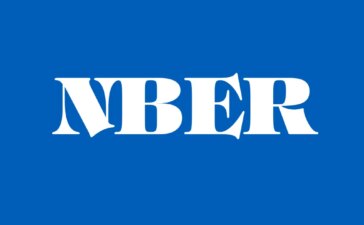Sakorn Sukkasemsakorn/iStock via Getty Images
Market Environment And Performance
The third quarter was strong across all equity classes. The S&P 500 was up 5.89% during the quarter, bringing the full year performance to 22.08%. Value outperformed growth during the quarter, with the Russell 1000 Value up 9.1% while the Russell 1000 Growth was up 3.2%. Small and mid cap stocks also performed quite well, up 9.3% (Russell 2000) and 9.2% (Russell Midcap). We also saw the market broaden out beyond the mega cap tech stocks during the third quarter.
With inflation readings continuing to shift lower and a job market that has softened a bit, the Federal Reserve cut interest rates in September by 50 basis points, which resulted in the yield curve shifting lower during the month. Although the economy continues to grow, there have been signs of slowing, with GDP expected to continue to moderate into year-end. In recent comments, the Fed has noted that they are turning their attention to unemployment rather than inflation as the main focus.
With inflation seemingly under control and some cracks in the job market, the market is expecting further rate cuts by the Fed into year-end.
More Specific Performance Attribution & Activity
Utilities, Real Estate, Industrials and Financials led the equity markets with double-digit returns in the quarter. Communications Services, Technology, and Energy were the weakest performing sectors. Communications Services and Technology were up 1.7% and 1.6%, respectively, while Energy was down -2.3% during the quarter. The Madison Sustainable Equity Fund (Class Y) outperformed the S&P 500 during the quarter. Sector Allocation was positive during the third quarter while Stock Selection was neutral. Sector Allocation was positive, with overweights to Utilities and Materials and underweights to Energy and Technology. Our underweights to Real Estate and Industrials detracted from performance. Stock selection was positive in Technology, Utilities, and Financials, but detracted in Communications Services, Consumer Staples, and Materials.
The top contributors in the quarter were NextEra Energy (NEE), Oracle Corporation (ORCL), Progressive Corporation (PGR), Equifax Inc. (EFX), and United Healthcare (OTCPK:UAHC). Alphabet Inc. (GOOG), Eli Lilly and Company (LLY), Qualcomm Incorporated (QCOM), Microsoft Corporation (MSFT), and Apple Inc. (AAPL) were the largest detractors.
NextEra has continued to perform well given its strong position in the renewable energy space, increasing demand for power, its transmission capabilities, as well as a tailwind from lower interest rates. Oracle reported a strong first quarter with accelerating Cloud infrastructure demand. Oracle followed its solid first quarter with an upbeat analyst meeting which highlighted multi-year growth opportunities for the company. Progressive Corp continues to perform well in a strong personal auto market. August results were better than expected with strong margins and better than expected premium and Policy in Force growth.
Although Equifax had a slightly mixed quarter, we believe that investors became more interested in the stock with the expectation that interest rates would come down and an expected return to solid earnings growth for the company. The U.S. Mortgage market has been depressed, we anticipate that lower interest rates will have a positive impact on the housing market and, in turn, Equifax.
United Healthcare reported a solid second quarter with an earnings beat. The quarter was a bit messy, but the underlying results were strong. The quarter included costs related to the Change Healthcare outage; however, investors have shifted their focus to 2025 with expected Medicare Advantage growth and moderating headwinds from Medicaid Medical Loss Ratio.
Alphabet continued to report solid numbers in the second quarter with strong Search, Cloud, and better operating margins. However, attention has recently shifted to the potential remedies post the DOJ trial, where it found that Google’s agreements with mobile phone OEMs to pre-install Google Search were anti-competitive. This part of the ruling could lead to changes in how Google distributes its search engine. The market is uncertain about the extent of Google’s market share losses in paid search under various remedy scenarios, which has been a headwind for the stock.
After first half strength, Eli Lilly has traded in a range this quarter, despite dramatically raising revenues and earnings following their second quarter report. There is a lot of noise in the Diabetes-Obesity space as many companies are looking for opportunities to get into the market, which is expected to exceed $100 billion in revenues in 2030. We have not seen any competitor data that would dethrone Novo Nordisk or Lilly but are watching carefully. Manufacturing capacity is a key barrier to entry and Lilly and Novo have locked up capacity for the next several years. Qualcomm has given back some of its first half gains after the CFO commented at a conference that its entrance into the AI PC business would take time to ramp. We continue to see Qualcomm as well positioned with growth from AI moving into the mobile phone, from new opportunities on the Internet of Things (IoT), and within the Auto industry but will also look to future growth as they enter the PC market. Microsoft has also given back some performance after a strong first half move. Microsoft’s fiscal fourth quarter was slightly below expectations as Azure growth came in below expectations. Commentary remains quite bullish about the AI opportunity and Microsoft continues to point to supply constraints. We continue to see Microsoft as one of the better positioned companies to benefit from the proliferation of AI with their expansive enterprise position.
Apple has been volatile in the last quarter but ended on strength. Early in the quarter, Apple benefited from the introduction of their AI strategy, Apple Intelligence. They followed in September with the new iPhone 16, which also created some excitement. We are underweight to Apple, which has resulted in a headwind for performance.
We added Keysight Technologies (KEYS) and Charles Schwab (SCHW) to the portfolio. Keysight focuses on providing essential testing and measurement solutions across a broad spectrum of industries, including wireless, wireline, automotive, and aerospace & defense. The company has a long history of strong financial performance, characterized by consistent revenue growth and healthy operating margins. Charles Schwab has an attractive business model where the primary growth driver is growing assets from existing and new customers. Schwab was impacted by the interest rate hiking cycle by relying on high-cost funding sources as its customers moved their deposits to higher-yielding alternatives such as money market funds. As we are now heading towards lower interest rates, we expect Schwab to have lower interest expenses as high-cost funding decreases which should drive strong earnings-per-share growth over the next few years. To fund these new purchases, we sold Nestle as we believe that the company’s organic growth profile has deteriorated and that it may deliver lower profits as a result. The company also recently unexpectedly fired its CEO and replaced the executive with a long-term insider which may not lead to resolving its current challenges. We also sold Nike. Although Nike recently changed its CEO after several years of inconsistent fundamentals, we believe that a turnaround may take several years before investors see improved execution. Finally, we eliminated Pepsi, which was a modest position, as we had other more attractive investment opportunities.
Sustainable Notes
▶ Danaher (DHR) released its 2024 Corporate Sustainability Report. It highlighted several milestones across its three pillars of sustainability (building the best team, innovating products that improve lives and the planet, and protecting the environment). The company has committed to setting greenhouse gas emission reduction targets in line with the Science Based Targets initiatives (SBTi), including reaching net-zero value chain emissions by 2050.
▶ In early August, Microsoft held a call to discuss how to advance AI sustainably and responsibly with its Chief Sustainability Officer, its Chief Responsible AI Officer, and the CVP of Cloud Operations and Innovation. Each leader detailed the company’s progress in their respective departments, noting the company’s commitments to carbon negativity, water positivity, and zero waste by 2030, which were initially set in 2020. The methods to achieve these goals include sustainable design and construction for its data centers, transitioning to more carbon-free power sources, using AI to enable existing transmission lines to bring on new RE capacity faster, replenish more water than it consumes, and engaging its suppliers to encourage them to adopt more sustainable practices. The company is aligned with the NIST AI Risk Management Framework and its four key functions: maintain a system for governing AI risks, documenting the risks associated with AI, measuring the likelihood and impact of AI risks, and implementing safeguards to protect against AI risks.
▶ Costco (COST) continues to demonstrate its commitment to sustainability by lowering its emissions. For example, it has converted its Kirkland Signature laundry packs from plastic tubs to a pouch. This has reduced plastic packaging by 80%. It has also moved to localize production of bulky items such as water, paper, and laundry detergents. Manufacturing these goods closer to the countries in which they are sold reduces emissions associated with shipping.
▶ The key sustainability highlights of The Charles Schwab Corporation include a solid governance framework, which includes a CSR/Sustainability committee and well-diversified Board, where 5 of the 16 members are women. The company recently granted a $1,000 stock option to all employees to ensure everyone has a stake in the company. We rate Schwab as Average due to the highly regulated industry in which it operates.
▶ Keysight Technologies has one of the lowest Sustainalytics Risk Scores (rating is 6.20, which is in the Negligible ESG Risk Score range of 0-10) due to its strong management of social and environmental issues. We have rated Keysight as Average, which reflects an opportunity for the company to improve board gender diversity and more direct board oversight of environmental and social issues.
Our Outlook And Positioning
We continue to be somewhat cautious as we enter the final quarter of the year. Equities have remained strong despite a slowing economy, a softening job market, an escalation of geopolitical issues and a tight U.S. election race. On the positive side, inflation is moving in the right direction and the Fed has started to cut rates. The lower interest rates may provide a tailwind to equities, but it will depend on economic growth and company earnings.
Valuations have continued to move higher and are now at 21x 2025 calendar earnings. As we noted last quarter, the mega cap stocks have a valuation premium due to their robust growth, but if you look more broadly, there are still opportunities at attractive valuations. Earnings estimates have remained relatively stable, with a slight tick lower following second quarter earnings. The market is looking for 9% earnings growth in 2024 for the S&P 500 and 14.8% for 2025. With a slowing economy, a softer job market, the almost 15% growth for next year seems high to us. We are redoubling our efforts when it comes to stock selection, looking for high quality companies with strong long-term growth prospects that are trading at attractive valuations and will use volatility to add to companies in our portfolio that have become more attractively valued.
Sincerely,
Maya Bittar & Dave Geisler
|
Disclosures Indices are unmanaged. An investor cannot invest directly in an index. They are shown for illustrative purposes only, and do not represent the performance of any specific investment. Index returns do not include any expenses, fees or sales charges, which would lower performance. The S&P 500® Index is a large-cap market index which measures the performance of a representative sample of 500 leading companies in leading industries in the U.S. Russell Investment Group is the source and owner of the trademarks, service marks and copyrights related to the Russell Indexes. Russell® is a trademark of Russell Investment Group. The Russell 2000®Index measures the performance of the 2,000 smallest companies in the Russell 3000® Index, which represents approximately 11% of the total market capitalization of the Russell 3000® Index. The Russell 1000® Value Index is designed to track those securities within the broader Russell 1000 Index that FTSE Russell has determined exhibit value characteristics. The Russell 1000® Growth Index is designed to track those securities within the broader Russell 1000 Index that FTSE Russell has determined exhibit growth characteristics. The Russell 1000® Index measures the performance of the 1,000 largest companies in the Russell 3000® Index, which represents approximately 89% of the total market capitalization of the Russell 3000 Index. The Russell Midcap® Index measures the performance of the 800 smallest companies in the Russell 1000® Index, which represent approximately 35% of the total market capitalization of the Russell 1000® Index. As of the latest reconstitution, the average market capitalization was approximately $3.7 billion; the median market capitalization was approximately $2.9 billion. The largest company in the index had an approximate market capitalization of $10.3 billion. Sustainalytics, a Morningstar Company, is an independent provider of environmental, social, and governance (ESG) research, ratings, and data. Madison utilizes this research as one of the inputs in analyzing sustainability factors of individual companies. MSCI’s ESG Rating is designed to measure a company’s resilience to long-term, industry material environmental, social and governance risks using a rules-based methodology to identify industry leaders and laggards according to their exposure to ESG risks and how well they manage those risks relative to peers. MSCI ESG Ratings range from leader (AAA, AA), average (A, BBB, BB) to laggard (B, CCC). 2024 Sustainalytics. All Rights Reserved. The information, data, analyses and opinions contained herein: (1) include proprietary information of Sustainalytics; (2) may not be copied or redistributed except as specifically authorized; (3) do not constitute investment advice nor an endorsement of any product or project; (4) are provided solely for information purposes; and (5) are not warranted to be complete, accurate or timely. Sustainalytics is not responsible for any trading decisions, damages or other losses related to it or its use. The use of the data is subject to conditions available at Sustainalytics. Yield Curve is a line that plots yields (interest rates) of bonds having equal credit quality but differing maturity dates. The slope of the yield curve gives an idea of future interest rate changes and economic activity. There are three main types of yield curve shapes: normal (upward sloping curve), inverted (downward sloping curve) and flat. A basis point is one hundredth of a percent. “Madison” and/or “Madison Investments” is the unifying tradename of Madison Investment Holdings, Inc., Madison Asset Management, LLC (“MAM”), and Madison Investment Advisors, LLC (“MIA”). MAM and MIA are registered as investment advisers with the U.S. Securities and Exchange Commission. Madison Funds are distributed by MFD Distributor, LLC. MFD Distributor, LLC is registered with the U.S. Securities and Exchange Commission as a broker-dealer and is a member firm of the Financial Industry Regulatory Authority. The home office for each firm listed above is 550 Science Drive, Madison, WI 53711. Madison’s toll-free number is 800-767-0300. Any performance data shown represents past performance. Past performance is no guarantee of future results. Non-deposit investment products are not federally insured, involve investment risk, may lose value and are not obligations of, or guaranteed by, any financial institution. Investment returns and principal value will fluctuate. This report is for informational purposes only and is not intended as an offer or solicitation with respect to the purchase or sale of any security. Consider the investment objectives, risks, and charges and expenses of Madison Funds carefully before investing. Each fund’s prospectus contains this and other information about the fund. Call 800.877.6089 or visit Madison Funds to obtain a prospectus and read it carefully before investing. Although the information in this report has been obtained from sources that the firm believes to be reliable, we do not guarantee its accuracy, and any such information may be incomplete or condensed. All opinions included in the report constitute the authors’ judgment as of the date of this report and are subject to change without notice. This report is for informational purposes only and is not intended as an offer or solicitation with respect to the purchase or sale of any security. Madison Asset Management, LLC does not provide investment advice directly to shareholders of the Madison Funds. Opinions stated are informational only and should not be taken as investment recommendation or advice of any kind whatsoever (whether impartial or otherwise). Madison Funds are distributed by MFD Distributor, LLC, member FINRA. Madison’s criteria for selecting sustainable investments will vary by industry and company. Madison uses a proprietary scoring system to assign an “above average,” “average,” or “below average” rating to each company, and monitors these ratings across the portfolio. Madison will only invest in securities it determines are “average” or “above average.” Madison-619553-2024-10-10 |















